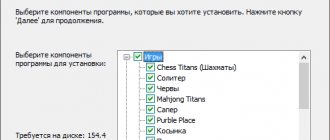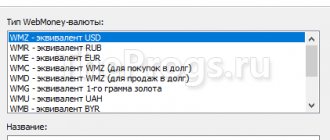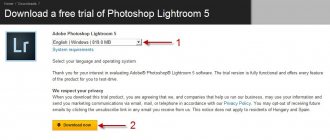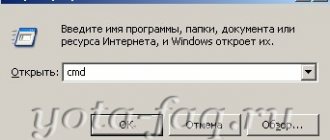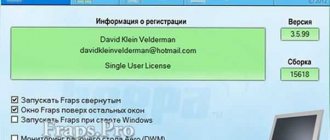OVERVIEW OF THE DVD-VIDEO FORMAT
DVD-Video format discs contain not only video and audio data itself, but also a lot of other information that allows you to implement powerful functions unique to this format: viewing an episode from different angles, prohibiting children from viewing unwanted scenes (“parental protection”), playing in random order, etc. This information also provides support for special playback modes such as fast forward and rewind. In this article, we will refer to the video and audio data contained on the disc as “presentation data,” and the additional information as “navigation data.”
DVD format
As you know, the DVD format is recognized as an international standard. This is a format that is capable of simultaneously containing a much larger range of information than another media container. In this article we will look at the capabilities and parameters of the DVD standard, analyze the structure of DVD files and get acquainted with its optical media. What is it for? Knowing the parameters of the file you have, you can evaluate the possibility of burning it to DVD with maximum quality and decide which format standard to choose. Knowing the structure of DVD files will help you find the information you need about the file and the video you want to create.
DVD Features
DVD stands for Digital Versatile Disc - digital universal (multi-purpose) disc. This storage medium is the same size as a CD, but the structure of its working surface is denser, and this allows you to store a larger amount of information. Data is read using a laser beam, whose wavelength is much shorter than that of a CD.
The DVD was first announced in 1995, and the first players and discs appeared in Japan (1996), and later (1997) in the USA and the CIS. DVD structure is divided into 4 types:
DVD-video - contain video and audio tracks; DVD-audio - contain audio, the quality of which is much higher than that on CDs; DVD-data - can contain any information; Mixed content.
DVD discs can contain not only video and audio data, but also a lot of other information. These features include: image angle (if recording was carried out simultaneously from different cameras); parental protection (prevents children from viewing unwanted scenes); random playback (playback in random order); accelerated playback. Each video file can contain up to eight audio tracks and up to 32 subgraphic elements. In addition, the DVD format has the ability to create a menu that serves to conveniently search for DVD video content and set the required parameters for the video (sound format, language, subtitles, etc.) DVD can simultaneously contain not only video and audio, but also such materials like all kinds of videos and slide shows. Now let's look at the DVD parameters.
The compression algorithm is based on an MPEG-2 decoder (codec). An MPEG-1 decoder can also be used, but its parameters are much lower, and it should only be used when you want to put up to ten hours of video and audio on the disk. Video bitrate varies from 2000Kbps to 9800Kbps. The bitrate can be constant, variable and average. The maximum aspect ratio size is 720x576 pixels (for the PAL ), and 720x480 pixels (for the NTSC ). DVDs can have smaller aspect ratios, but not larger ones. Some DVD players only support aspect ratios of 352x288, 704x576 and 720x576 (PAL). Therefore, when creating DVD video, it is advisable to stick to these aspect ratios. However, there are fewer such players that do not support other ratios every year. DVD audio data formats can be DTS, PCM, MPEG, AC-3 (Dolby Digital). The sampling frequency (Fs) of the PCM format can be 48 kHz or 96 kHz. Other audio formats have 48 kHz. The maximum data transfer rate in one stream for PCM is 6.144 Mbit/s, for Dolby Digital — 448 kbit/s, for MPEG Audio — 912 kbit/s.
DVD structure
Let's look at the DVD file structure. The DVD consists of two folders VIDEO_TS and AUDIO_TS . The VIDEO_TS folder is for DVD videos. The AUDIO_TS folder is for DVD audio. Since the DVD audio format is not as widespread as DVD video, we most often see this folder empty. The minimum number of files in the VIDEO_TS folder is five. Here they are:
VIDEO_TS.BUP VIDEO_TS.IFO VTS_01_0.BUP VTS_01_0.IFO VTS_01_1.VOB This video does not contain a menu and consists of one video file. Typically, the duration of such a file with the correct compression standards does not exceed 30 minutes (but not always). Let's look at the remaining files using the following example. Open another folder VIDEO_TS.
VIDEO_TS.BUP - VMGI file containing backup data VIDEO_TS.IFO - VMGI file containing video manager information VIDEO_TS.VOB - VMGM file containing video manager menu VTS_01_0.BUP - VTSI file containing backup data VTS_01_0.IFO - VTSI file , containing control data VTS_01_0.VOB - a file for the VTS menu containing a set of video objects VTS_01_1.VOB - The first file from the first set of video objects VTS_01_2.VOB - The second file from the first set of video objects VTS_01_3.VOB - The third file from the first set of video objects VTS_01_4.VOB - The fourth file from the first set of video objects VTS_02_0.BUP - VTSI file containing backup data VTS_02_0.IFO - VTSI file containing control data VTS_02_1.VOB - First file from the second set of video objects VTS_03_0.BUP - VTSI file containing backup data VTS_03_0.IFO - VTSI file containing control data VTS_03_1.VOB - First file from the third set of video objects
Files starting from VTS_01_1.VOB can contain simultaneously video and audio streams, as well as subtitles and navigation data. Moreover, there is always one video stream in such a file, but there can be several audio and subtitles. Files VTS_01_1.VOB and further should not exceed 1GB in size. If the video is larger, then it is divided into files VTS_01_1.VOB, VTS_01_2.VOB, VTS_01_3.VOB, etc. Accordingly, there cannot be more than five of them on a DVD disc on DVD5 and no more than nine on DVD9. All these files in a set of video objects have the same bitrate, color system and aspect ratio (most often). Another set of video objects (VTS_02_1.VOB and further) is a separate title, which also contains a video stream and one or more audio tracks and subtitles. This could be a single video or an entire film. The set VTS_02_1.VOB, VTS_02_2.VOB and further may differ from the first set in different bitrates, color systems and aspect ratios. Therefore, if you record several videos of short duration, shot with different video cameras, then it is more advisable to create several separate volumes on the disk so as not to encode all the videos to one parameter. If a set of video objects consists of more than one file, then it is usually accompanied by a file VTS_01_0.VOB, which contains the VTS menu and provides sequential playback of the files. In addition, each set of video objects is equipped with two files with extensions .IFO and .BUP, where the first contains control data and the second contains backup data.
DVD disc
Let's consider several types of DVD optical media, where information is recorded and read using a laser with a wavelength of 650 nm and a track pitch of 0.74 microns (this is more than 2 times shorter than that of a CD).
Based on the diameter, DVD discs are divided into 2 types: discs with a diameter of 8 centimeters ( mini-DVD ) and discs with a diameter of 12 centimeters (DVD). Each type can have two working sides, and each side can have up to two working layers. A mini-DVD can hold up to 1.4GB of data on each side, and 4.7GB of data on each side of a DVD. A double-layer, single-sided DVD disc holds up to 8.5GB of information. The capacity of the disk depends on the number of working layers and sides. The disks got their name from the rounding of the capacity that the disk contains. There are four kinds of mini-DVD discs, named DVD-1, DVD-2, DVD-3, DVD-4 and 5 kinds of DVD discs, named DVD-5, DVD-9, DVD-10, DVD-14, DVD-18 .
There are three formats for recording DVD data. These are DVD+R/RW (plus), DVD-R/RW (minus) and DVD-RAM . DVD-R(W) was first developed by Pioneer (1997). It was joined by several other companies that later joined the DVD Forum. Subsequently, they developed rewritable discs (DVD-RW). The developments of Sony, Philips and some other companies were not taken into account. Then these companies united in the DVD+RW Alliance and developed the DVD+R(W) standard in 2002. The license cost for this project was significantly lower. The main difference between DVD-R(W) and DVD+R(W) is the fact that DVD+R(W) has the ability to write data to the desired locations on the disk . There are other differences, such as special markings and a different material for the reflective layer, but we will not focus on these. Previously, DVD recorders could only record one standard (plus or minus), and the opposite standard could even damage the recorder lens.
DVD-RAM discs are highly reliable and can be rewritten many times (100 times) than DVD±RW. However, their price is also significantly higher than DVD±RW and most DVD players are not compatible with them.
One of the important parameters of DVD±R/RW is the reading speed. It was assumed that 1x (unit of write, read speed) is about 1352 KB/s. This is approximately equal to speed nine when reading a CD. If you have a 16-speed drive and DVD±R supports sixteenth speed, then the write (or read) speed will be 16 * 1.32 = 21.12 MB/s. After the most basic concepts of the DVD Format have been covered, it remains to move directly to digitization or conversion.
Author: Alexander Kravchenko
DVD format 2013-12-21T19:34:38+00:00 adminDVD video digitization, video digitization As you know, the DVD format is recognized as an international standard. This is a format that is capable of simultaneously containing a much larger range of information than another media container. In this article we will look at the capabilities and parameters of the DVD standard, analyze the structure of DVD files and get acquainted with its optical media. What is it for? Knowing the parameters of the file available...admin Administrator
VMG AND VTS
The DVD-Video zone contains all the files necessary to play DVD-Video, and is built from one video manager (VMG, Video Manager), and several sets of video titles (VTS, Video Title Sets). The VMG consists of video manager information (VMGI, Video Manager Information), a set of video objects for the VMG menu (VMGM_VOBS, Video Object Set for VMG Menu,), and a backup VMGI (BUP).
VMGI contains control information for the entire DVD-Video zone, and consists of a single file called VIDEO_TS.IFO.
VMGM_VOBS, which consists of a single file named VIDEO_TS.VOB, contains the contents of the title selection menu.
VMGI(BUP) is a complete copy of VMGI, and consists of a single file named VIDEO_TS.BUP.
VMGM_VOB may be absent, but the presence of the other two types of information is required.
| Structure of DVD-Video disc |
Each VTS consists of information about a set of video titles (VTSI, Video Title Set Information), a set of video objects for the VTS menu (VTSM_VOBS, Video Object Set for the VTS Menu), a set of video objects for titles in the VTS (VTSTT_VOBS, Video Object Set for Titles in a VTS), and backup VTSI(BUP).
VTSI is control information for the VTS, contained in a single file named VTS_##_0.IFO.
VTSM_VOBS contains data for all menu types from VTS, they are contained in one file called VTS_##_0.VOB.
VTSTT_VOBS contains the data necessary to play the video program, this set consists of several files named VTS_## [email protected]
VTSI(BUP) – a complete copy of VTSI, consists of one file VTS_##_0.BUP. VTSM_VOBS may not exist, but the other three data types must exist. In file names, ## is a two-digit number from 01 to 99, @ is a number from 1 to 9.
PRESENTATION DATA
According to the MPEG-2 program stream specification, video, audio, and subgraphics data from the presentation data are multiplexed with a portion of the navigation data. The block and packet structure follows this specification, each block containing 2048 bytes. The multiplexing rate (mux_rate) is 10.08 Mbit/s.
Video
| data compression method | MPEG-2, MPEG-1 |
| baud rate | data transfer rate maximum 9.8 Mbit/s (MPEG-2); maximum 1.856 Mbps (MPEG-1) |
| GOP size | maximum 36 fields |
| screen presentation | |
| television systems | 525/60 (NTSC), 625/50 (PAL) |
| aspect ratio | 4:3, 16:9 |
| modes | with cropping part of the image (“pan & scan”); with margins at the top and bottom (“letterbox”) |
| user data | subtitles |
Video data exists as a single data stream, compressed according to the requirements of the MPEG-2 video format. To ensure high image quality, the stream supports variable bit rate with a maximum of 9.8 Mbps.
The DVD-Video format is compatible with NTSC and PAL standards, and supports 4:3 and 16:9 aspect ratios. To display a 4:3 aspect ratio video program on a 16:9 screen, the disc creator can choose either “pan & scan” (cropping part of the image) or “letterbox” (showing the entire image with black bars at the top and bottom).
Sound
| Linear PCM | Dolby Digital* | MPEG Audio | |
| Fs (sampling frequency) | 48 kHz, 96 kHz | 48 kHz | 48 kHz |
| Qb (quantization) | 16 / 20 / 24 bit | Uses compression | Uses compression |
| Data transfer rate (in 1 stream) | maximum 6.144 Mbps | maximum 448 kbps | maximum 912 kbps |
* Trademark of Dolby Laboratories Licensing Corporation
The DVD specification defines three audio formats: linear pulse code modulation (PCM), Dolby Digital and MPEG audio. Each video program can have up to eight audio streams, which can be characterized by different attributes, such as language. Each stream consists of several channels. For example, Dolby Digital supports 5+1 channels.
When using linear PCM, DVD audio can have a sampling rate of up to 96 kHz with a resolution of up to 24 bits, many times superior to CD audio in quality. For Dolby Digital and MPEG audio, the sampling rate is 48 kHz. The MPEG audio format supports MPEG-2 compression and multi-channel.
Subgraphic elements
| image data format | run length encoding, two bits per pixel |
| amount of data per image | no more than 52 KB |
| permission | 720×480 (525/60) 720×576 (625/50) |
| display colors | 16 colors (defined by program sequence) |
| display control | changing the contrast and color of pixels; changing the display area (moving); changing the displayed data (scrolling); forced display |
Subgraphic elements are a DVD feature that allows you to specify any data (for example, subtitles, menus, karaoke texts), which will then be displayed as a raster image on top of the main video plot. This data is compressed using repetition length encoding. For each video program there can be up to 32 streams of subgraphics elements.
These subgraphic elements can be displayed in 16 different colors. For information such as subtitles, the user himself controls the display of subgraphic elements. DVD also supports the ability to force the display of subgraphic elements, for example, if the creator of the video program wants to show a menu in a certain place.
Video formats:
AVI (Audio-Video Interleaved) is an extension to a huge number of video files, but is not a format or codec. This is a container developed by Microsoft that can store 4 types of streams - video, audio, text and midi. This container can contain video of any format from mpeg1 to mpeg-4, sounds of different formats, and any combination of codecs is possible. To determine the contents of this container, you need to use one of the many programs from the powerful Adobe Premiere to the simple VideoToolBox.
WMV (Windows Media Video) is a format from Microsoft, and it is in this format that you will receive a video made using Movie Maker.
MOV is an Apple Macintosh QuickTime format that can contain, in addition to video, graphics, animation, and 3D. Most often, QuickTime Player is needed to play this format.
MKV - (Matryoshka or Matroska) - is also a container that can contain video, audio, subtitles, menus, etc. It is open source, not very widespread yet, but very promising.
3gp - videos for third generation mobile phones, are small in size and low quality.
Let's look at the video formats that are used on the Internet:
FLV (Flash Video) is a video format for posting and transmitting on the Internet, used by such platforms for posting video clips as YouTube, RuTube, Tube.BY, Google Video, Movie and many others.
SWF (Shockwave Flash) is an extension of animation created in Adobe Flash, as well as video in Flash format, played by browsers using Flash Player. Flash movies are also widely distributed on the Internet.
This means that the FLV extension is a Flash video, and the SWF extension is a Flash movie.
RM, RA, RAM are extensions of the RealVideo format from RealNetworks, which is used for television broadcasting on the Internet. It has a small file size and low quality, but allows you to watch, for example, a TV news release on the website of a certain television company.
Let's look at the main extensions that relate to DVDs:
VOB (Versioned Object Base ) is a container extension that can contain multiple video (MPEG-2 format) and audio streams, as well as movie menus and subtitles. These are the main files on a movie DVD.
IFO - files on a DVD disc containing information about the film, menu, order of launching VOB files, necessary, for example, for a DVD player, i.e. service files. Created during the conversion or authoring process, i.e. burning a DVD.
m2v, m2p - video extensions in MPEG-2 format. I won’t go into depth, I’ll just say that such a video is needed for authoring, i.e. creating VOB files and burning DVDs. I'll talk about authoring elsewhere.
DVD video.
Physically, the DVD format is similar to a CD, with the difference that a laser beam with a shorter wavelength is used to work with DVD discs. Due to this, a high recording density is achieved. Also, there are DVDs with an additional data storage layer, which doubles the amount of data stored on one side. A single-layer DVD can record up to 4.7 GB per side, and a double-layer DVD can record up to 8.5 GB.
There are several types of DVD media. DVD Forum initially defined three types: DVD-R, DVD-RW, and DVD-RAM. DVD-RAM is a physically rewritable format, but it is not compatible with the standard DVD Video format.
Logical organization of DVD Video
Unlike a CD, which consists of tracks listed in a TOC (Table Of Contents), a DVD has a UDF file system.
DVD Video is logically divided into the following parts:
NAVIGATION DATA
Cells and PGCs
A cell is a basic unit of real-time data reproduction and has its own permanent identification number (ID). The program sequence (PGC, Program Chain) determines the order in which the cells are played. A video program consists of one or more linked PGCs. In a regular movie, where one video program consists of one PGC, the cells are written to disk and played back one after another, and the sequence number of the cell and its ID are the same. If there are several video programs on the disk, each of which is defined by its own PGC, then there will not be such a match.
Thus, the DVD specification with cells and program sequences is, by its very nature, designed to reproduce real-time data in random order. This structure can be used to implement various playback modes, for example, selecting the level of access to certain scenes (parental protection), choosing to view a movie sequence from a different camera, and viewing a movie in a different director’s edition (story selection).
Each PGC may also have a pre-command, which is executed before the first cell is played, and a post-command, which is executed after the last cell is played. The PGC may also contain on-screen buttons or cell commands that are executed when it is played back. With the help of these commands and user actions, one PGC can branch into several, several PGCs can lead to the same PGC, etc. This provides a variety of playback interactivity.
Programs and PTT
A series of one or more cells with sequential numbers belonging to one PGC is called a program. Programs can be used as fragments for playback in random order, and they can also be accessed through commands. A series of one or more sequentially numbered programs within a single PGC is called a PTT. PTTs correspond to sections of a video program, and represent units of access at the user level.

